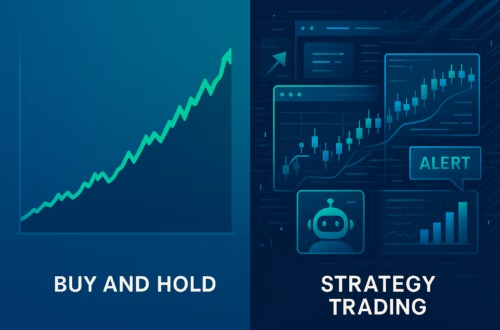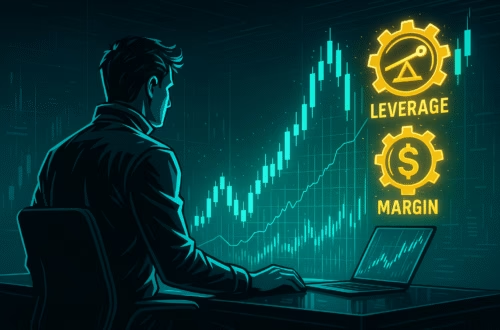Introduction
The financial markets have undergone tremendous transformations, driven by technological advancements that have revolutionized trading mechanisms. The future of automated trading is a hot topic among traders, financial analysts, and tech enthusiasts alike. With the integration of artificial intelligence (AI) and machine learning, the trading landscape is on the brink of a significant evolution. This article explores the future of automated trading, emerging trends, and the pivotal role AI and machine learning play in this domain.
Connect Trading view to Tradovate using PickMyTrade in United States America (USA)
The Evolution of Automated Trading
Automated trading, also known as algorithmic trading, involves the use of computer programs to execute trades at optimal speeds and accuracy. The journey began with simple rule-based systems and has now progressed to sophisticated algorithms that can analyze vast amounts of data in real-time. These systems have become essential tools for institutional and individual traders seeking to gain a competitive edge in the fast-paced financial markets.


Advantages of Automated Trading Systems Speed and Efficiency
One of the primary advantages of automated trading systems is their ability to process and execute trades at lightning speed. Unlike human traders, algorithms can analyze multiple market conditions simultaneously and make split-second decisions that capitalize on fleeting opportunities.
Minimizing Human Error
Human traders are prone to errors, influenced by emotions and cognitive biases. Automated trading systems eliminate these factors, ensuring that trades are executed based on predefined criteria and market data, thereby reducing the risk of costly mistakes.
24/7 Market Access
With markets operating across different time zones, the ability to trade around the clock is invaluable. Automated systems can monitor and execute trades 24/7, allowing traders to capitalize on global market movements without the need for constant human intervention.
Challenges in Automated Trading Technical Glitches
Despite their advantages, automated trading systems are not without flaws. Technical glitches, such as software bugs or hardware failures, can lead to significant financial losses. Ensuring robust and resilient infrastructure is crucial to mitigating these risks.
Market Volatility
Automated systems can sometimes exacerbate market volatility, especially during times of high uncertainty. Rapid, large-scale trading decisions made by algorithms can amplify price swings, contributing to market instability.
Regulatory Concerns
The rise of automated trading has prompted regulators to scrutinize these systems more closely. Ensuring compliance with regulatory frameworks and maintaining transparency in algorithmic strategies is essential to avoid legal repercussions and maintain market integrity.
Emerging Trends in Automated Trading Integration with AI and Machine Learning
The integration of AI and machine learning is perhaps the most significant trend shaping the future of automated trading. These technologies enable systems to learn from historical data, identify patterns, and make more informed trading decisions. AI-powered algorithms can adapt to changing market conditions and continuously improve their performance.
Rise of Quantum Computing
Quantum computing holds the potential to revolutionize automated trading by solving complex problems at unprecedented speeds. While still in its nascent stages, the application of quantum computing in financial markets could lead to breakthroughs in trading strategies and risk management.
Decentralized Finance (DeFi)
Decentralized Finance (DeFi) is an emerging trend that leverages blockchain technology to create open, permissionless financial systems. Automated trading within the DeFi ecosystem allows for seamless, transparent transactions without intermediaries, offering new opportunities for traders and investors.
The Role of AI in Automated Trading Predictive Analytics
AI-powered predictive analytics can forecast market trends and price movements with remarkable accuracy. By analyzing historical data and identifying patterns, these systems provide traders with valuable insights that inform their trading strategies.
Natural Language Processing (NLP)
Natural Language Processing (NLP) enables automated trading systems to analyze and interpret vast amounts of unstructured data, such as news articles and social media posts. This capability allows traders to gauge market sentiment and make more informed decisions based on real-time information.
Machine Learning Transforming Trading Strategies Reinforcement Learning
Reinforcement learning, a subset of machine learning, involves training algorithms through trial and error to achieve optimal trading strategies. These systems learn from past experiences and continuously refine their decision-making processes, leading to more effective trading outcomes.
Algorithmic Trading
Algorithmic trading, driven by machine learning, involves the use of complex mathematical models to execute trades. These models can analyze market data, identify trading opportunities, and execute orders with minimal human intervention, enhancing efficiency and profitability.
Impact of Big Data on Automated Trading Data-Driven Decision Making
Big data plays a crucial role in automated trading by providing vast amounts of information that algorithms can analyze to make informed decisions. Data-driven trading strategies leverage historical and real-time data to predict market movements and optimize trading performance.
Real-Time Data Analysis
The ability to analyze real-time data is a game-changer for automated trading. Advanced algorithms can process and react to market information as it happens, allowing traders to capitalize on short-term opportunities and mitigate risks more effectively.
Regulatory Landscape of Automated Trading Global Regulations
The regulatory landscape for automated trading varies across different regions. Regulatory bodies are continuously evolving their frameworks to address the challenges and risks associated with algorithmic trading. Traders and firms must stay abreast of these regulations to ensure compliance and avoid penalties.
Ethical Considerations
As automated trading becomes more prevalent, ethical considerations come to the forefront. Ensuring fairness, transparency, and accountability in algorithmic strategies is crucial to maintaining trust in financial markets. Addressing issues such as market manipulation and the ethical use of data is essential for the sustainable growth of automated trading.
Future Predictions for Automated Trading AI and Machine Learning Dominance
The future of automated trading is set to be dominated by AI and machine learning. These technologies will continue to evolve, driving innovation and improving trading performance. The ability to adapt to changing market conditions and learn from new data will be key to staying competitive in the financial markets.
Increased Market Participation
Automated trading is expected to lower barriers to entry, enabling more individuals and institutions to participate in financial markets. The democratization of trading through advanced technology will lead to greater market liquidity and diversity, fostering a more inclusive financial ecosystem.
Conclusion
The future of automated trading is bright, driven by continuous advancements in AI, machine learning, and other emerging technologies. While challenges remain, the potential for increased efficiency, accuracy, and profitability is immense. Traders and firms that embrace these innovations and navigate the regulatory landscape effectively will be well-positioned to thrive in the evolving financial markets.
FAQs
What is automated trading?
Automated trading, also known as algorithmic trading, involves using computer programs to execute trades based on predefined criteria. These systems analyze market data and make trading decisions without human intervention.
How does AI enhance automated trading?
AI enhances automated trading by enabling systems to learn from historical data, identify patterns, and make informed decisions. AI-powered algorithms can adapt to changing market conditions and continuously improve their performance.
What are the benefits of automated trading systems?
Automated trading systems offer several benefits, including speed and efficiency, reduced human error, and 24/7 market access. These systems can process and execute trades at lightning speed, ensuring optimal trading outcomes.
What are the challenges associated with automated trading?
Challenges in automated trading include technical glitches, market volatility, and regulatory concerns. Ensuring robust infrastructure and compliance with regulations is crucial to mitigating these risks.
What is the role of machine learning in trading?
Machine learning transforms trading strategies by enabling algorithms to learn from past experiences and refine their decision-making processes. Techniques like reinforcement learning and algorithmic trading enhance efficiency and profitability.
What is the impact of big data on automated trading?
Big data provides vast amounts of information that algorithms can analyze to make informed trading decisions. Real-time data analysis allows traders to capitalize on short-term opportunities and mitigate risks more effectively.



